


Children's Nonfiction Books – Access Thousands of Free Titles

When you think of children's books, popular literature genres like fantasy and adventure that capture the imagination might immediately come to mind. However, children's nonfiction books offer a wealth of benefits and can even be more exciting and interesting to some kids.
Nonfiction books for kids are a powerful way to encourage reluctant readers by tapping into their special interests.
They can also introduce young minds to new vocabulary words and fascinating facts about people, places, things, and events – building a child’s overall background knowledge in an engaging and age-appropriate way.
Reading nonfiction books is a great way for children to develop critical thinking, analytical and reading comprehension skills.
The ability to read and understand complex texts is a major indicator of sustained academic success.
nonfiction-re-library-jump-link
Nonfiction books for kids in the Reading Eggs Library
The Reading Eggs Library features thousands of nonfiction e-books for reading ages 5 to 12.
With so many titles to choose from, Reading Eggs makes it easy to find a diverse range of books that are age-appropriate and about subjects bound to interest your child.
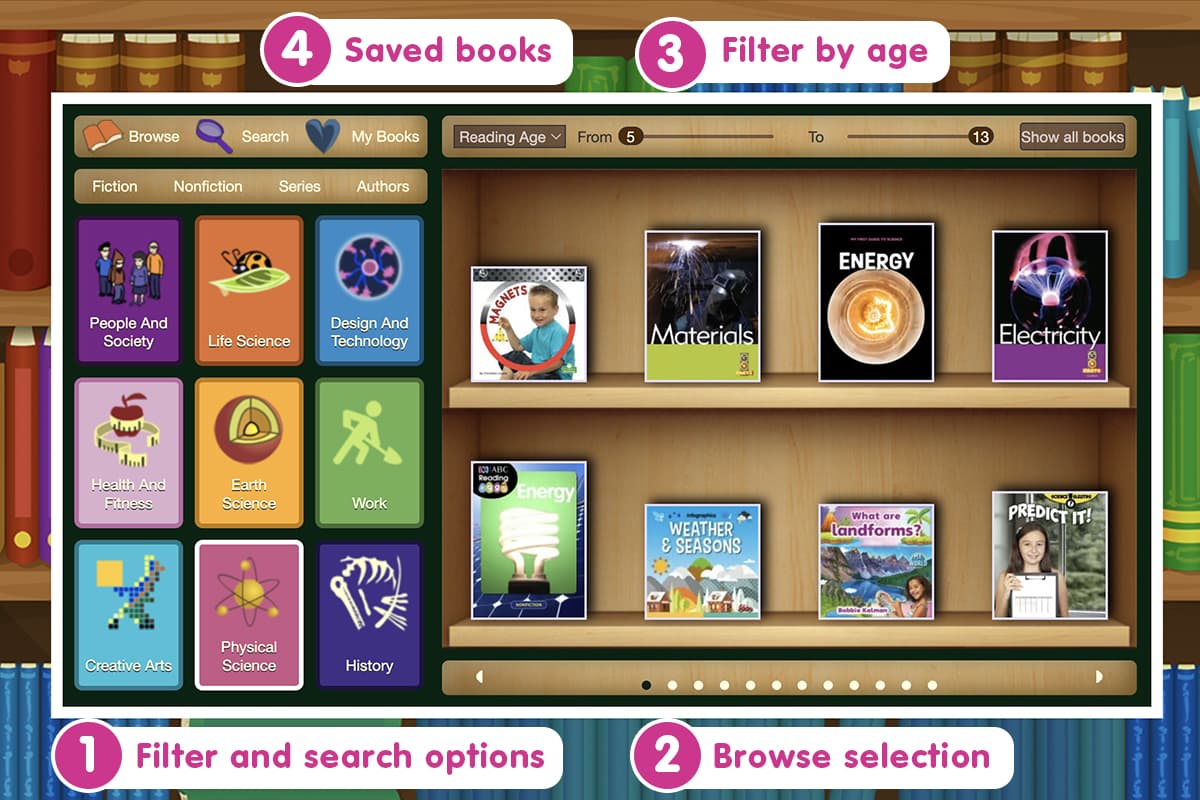
The Reading Eggs Library has over 4,000 fiction and nonfiction e-books for kids that can be filtered by subject, series, author and reading level. Children can save favourite books to their My Books bookshelf. Get free access
Each book is levelled, meaning that it includes a recommended reading age and Lexile level.
However, kids shouldn't limit their book choice to only those recommended for their reading age. Nonfiction books don't have to be read from cover to cover.
Longer texts are split into clickable chapters, making it easy for children to navigate to the specific information they’re looking for.
They can also ask questions and refer to the diagrams and illustrations.
For early readers, the books include read-aloud audio so they can follow along and learn.
Comprehension quizzes at the end of each chapter and book assess your child’s understanding of the text. These are optional to complete, unless the book is assigned as part of a program lesson or end-of-map assessment.
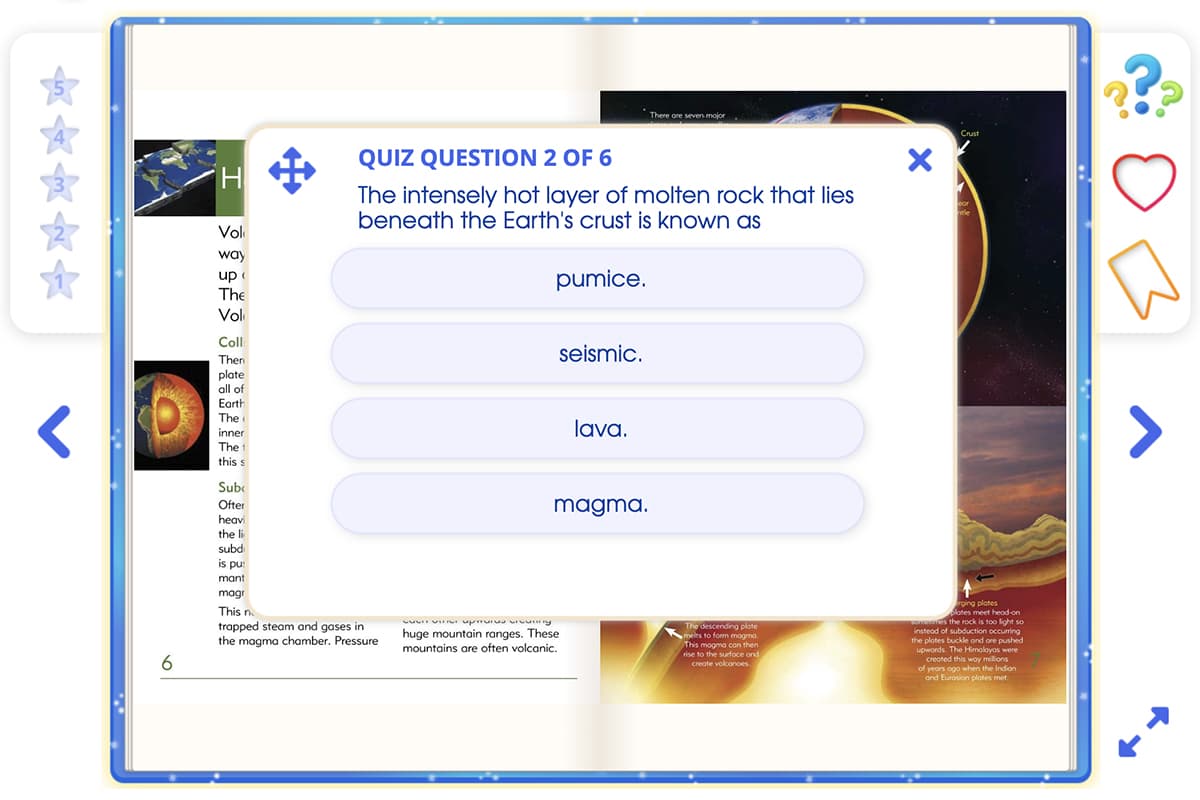
The nonfiction books in the Reading Eggs Library are organised into nine categories:
People and Society
Life Science
Design and Technology
Health and Fitness
Earth Science
Work
Creative Arts
Physical Science
History.
You can also browse for more specific subjects in the Series section. These include:
Action Sports, Amazing Facts, Animals, Art, Biography, Brainwaves, First Nations, Geography, Go Facts, Harmony and Understanding, Health and Understanding, Indigenous People of Canada, Native Americans, On the Job, Social Studies, Star Struck, STEAM Science, U.S. History, Weird Wild Wonderful, World Adventures and World History.
All the books listed below can be accessed for free with a 30-day trial of Reading Eggs (teachers can sign up here). You'll unlock the complete online library of over 4,000 fiction and nonfiction kids’ books and gain full access to our multi-award winning reading programs. Start your free trial today!
Once you've set up your Reading Eggs account, click on the links below to access the books.
nonfiction-people-society-jump-link
1. People and Society
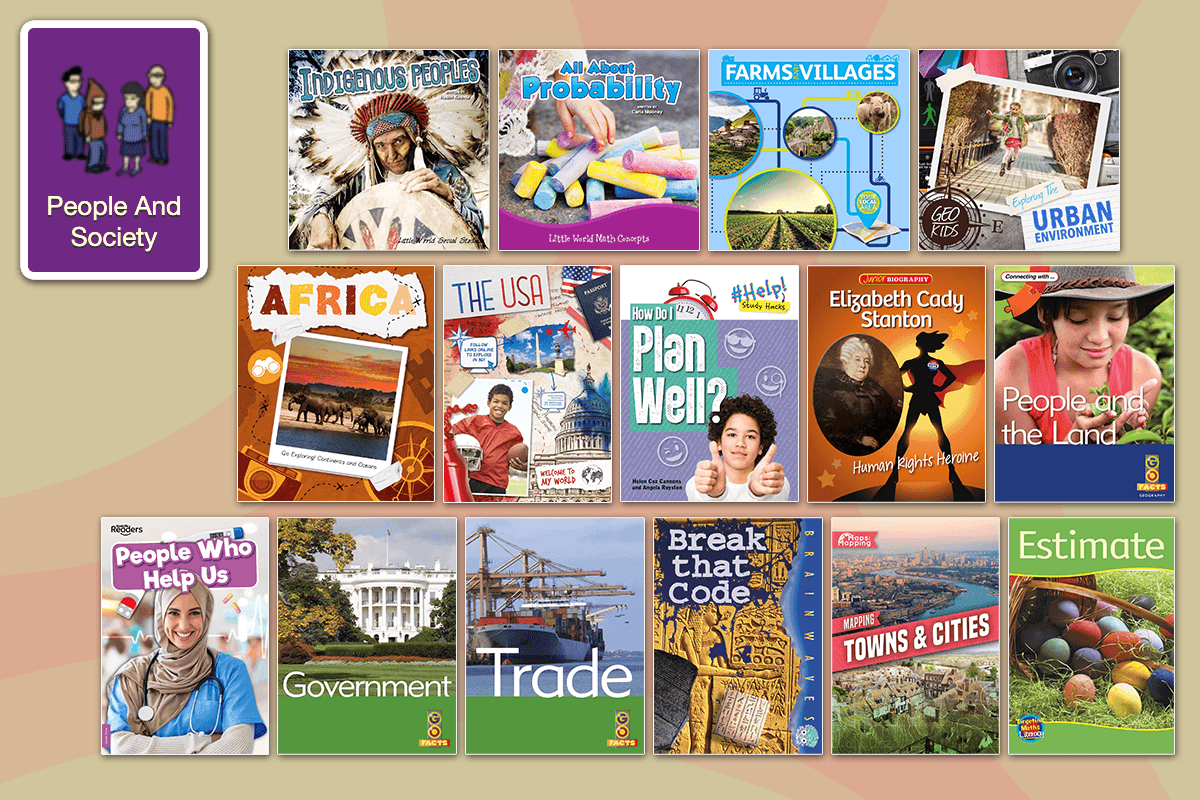
This category features books about different cultures, communities and social structures. Children can read biographies of famous people and world leaders, and learn about government, maths concepts and basic economics. They can also improve their skills in communication, planning and research.
Explore the People and Society category
nonfiction-life-science-jump-link
2. Life Science
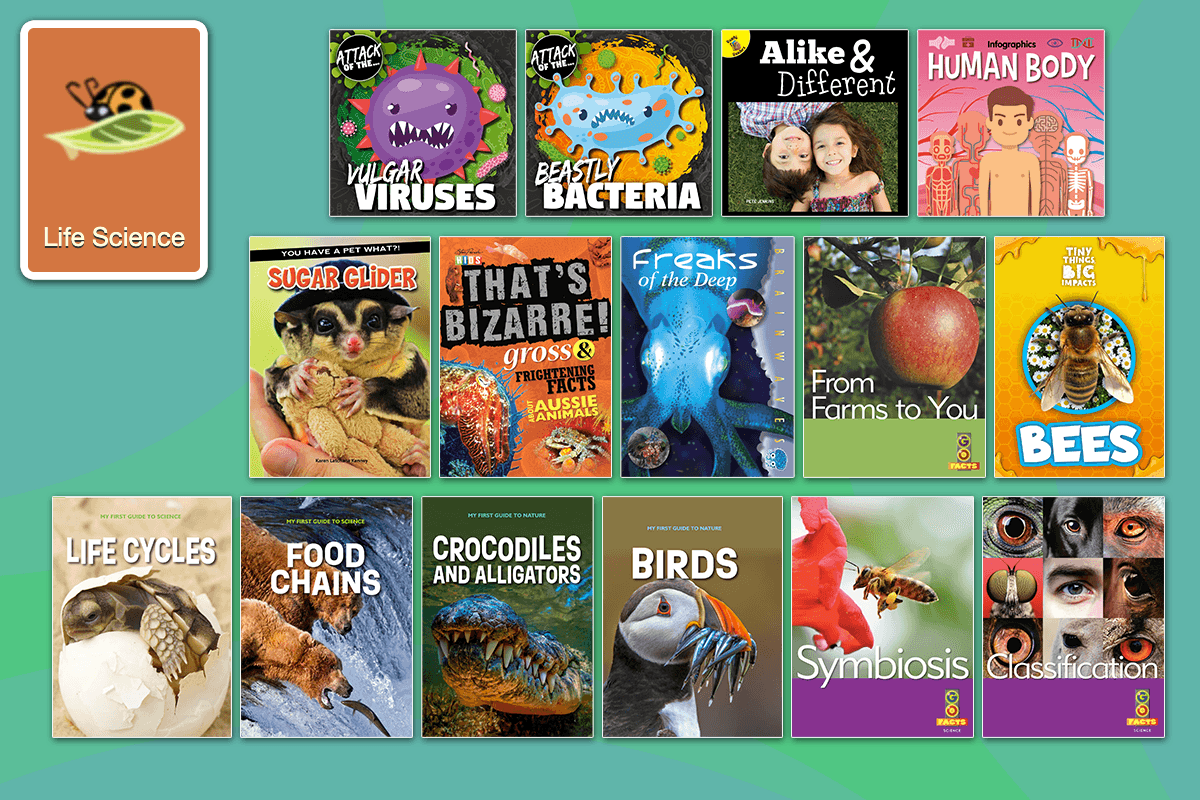
The books in this category cover a wide range of biology-related topics, such as animals, plants, the human body, ecosystems and the environment.
Explore the Life Science category
Access thousands of children’s nonfiction books for FREE
The Reading Eggs Library is packed with over 4,000 fiction and nonfiction titles to nurture your child’s love for reading. Start your 30-day free trial today and unlock the entire Library, as well as hundreds of fun reading lessons, games and activities for ages 2–13.
nonfiction-design-technology-jump-link
3. Design and Technology
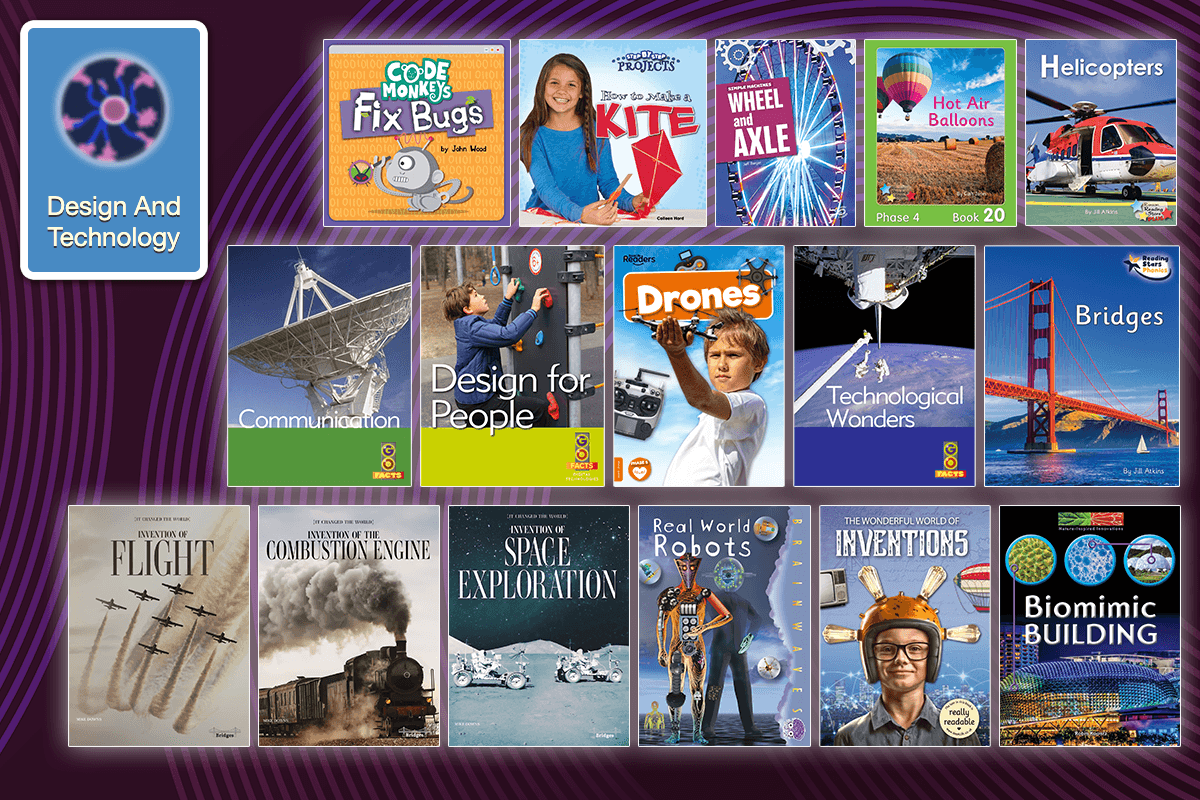
This category includes topics like how things are made, engineering, inventions, different types of technology and the impact of design and technology on society.
Explore the Design and Technology category
nonfiction-health-fitness-jump-link
4. Health and Fitness

The books in this category cover food and nutrition, exercise and sports, and the human body's wellbeing (physically and mentally).
Explore the Health and Fitness category
nonfiction-earth-science-jump-link
5. Earth Science
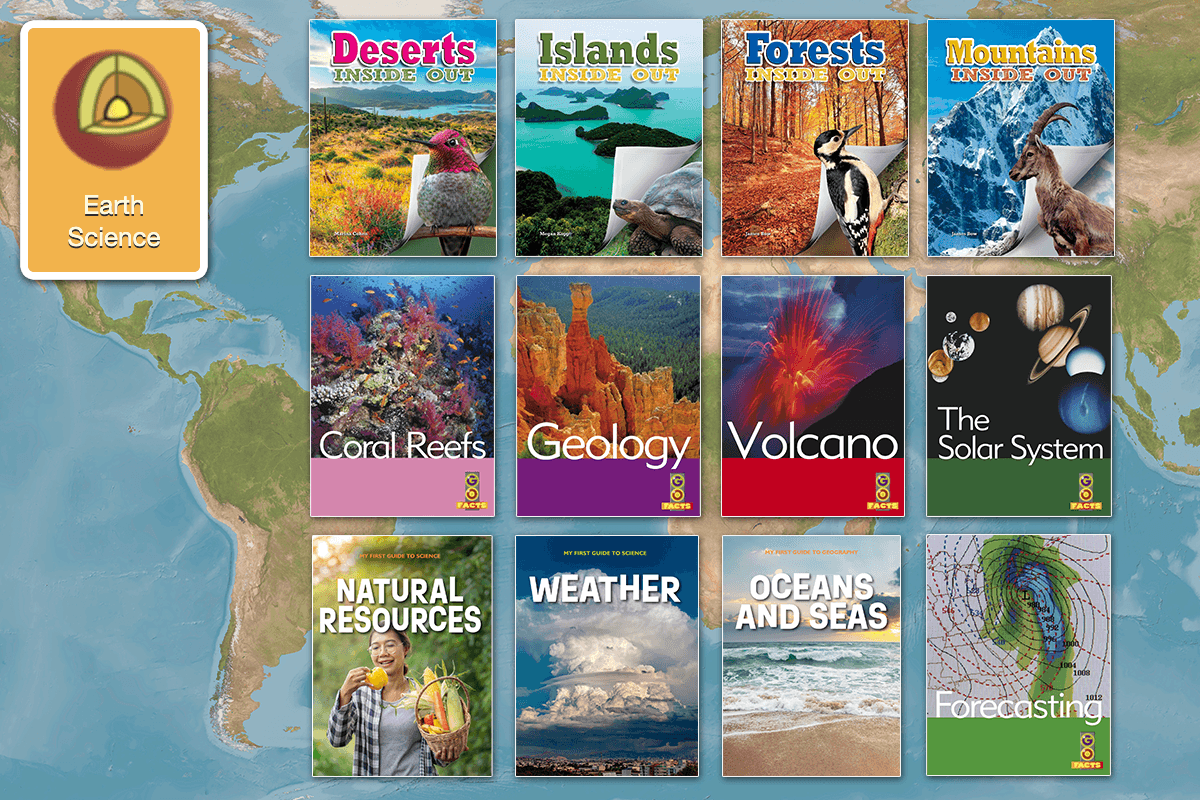
This category features books about geology, weather patterns and climate, oceans, landforms, the Earth's biome and our place in the solar system.
Explore the Earth Science category
Fun science series
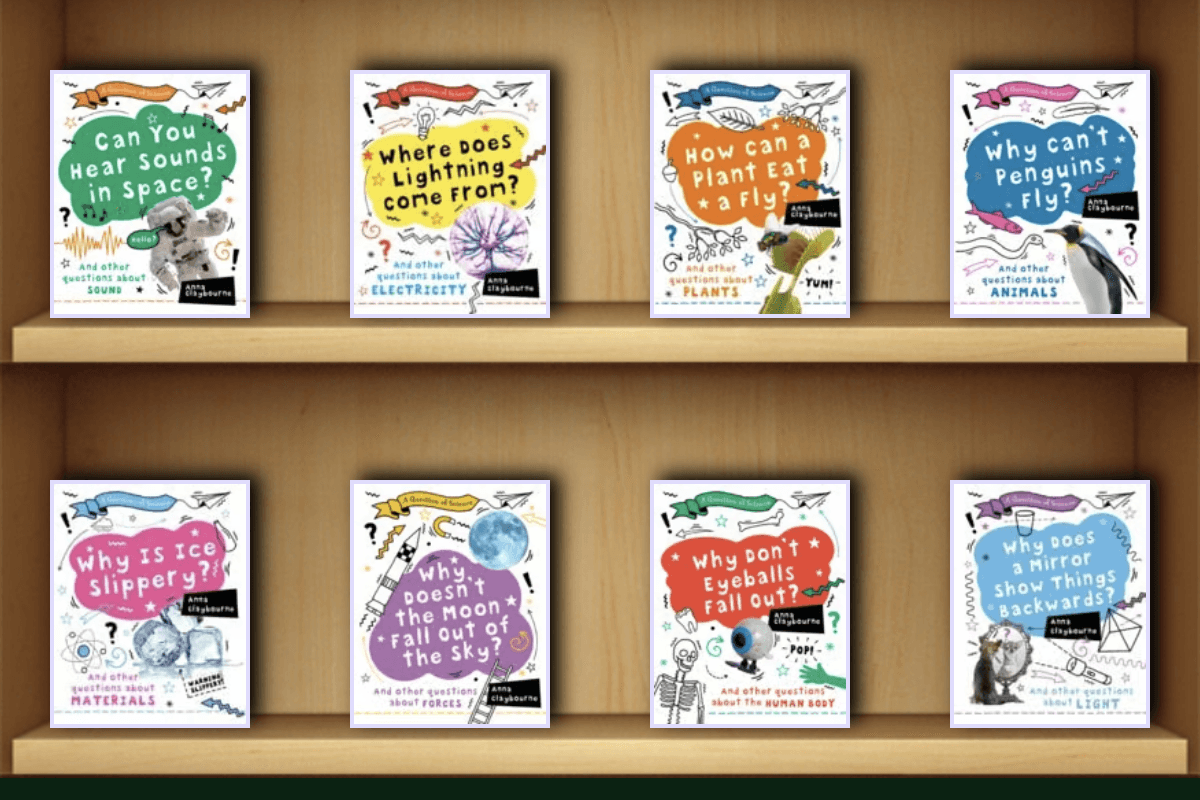
Why is the sky blue? Where does light go when you switch it off? This entertaining question-and-answer series by Anna Claybourne uses humorous illustrations to draw kids into science in a fun way! Each book features one area of science and tackles the science questions that children ask in real life. Topics covered in the series: Sound, Electricity, Plants, Animals, Materials, Forces, the Human Body and Light.
Access thousands of children’s nonfiction books for FREE
The Reading Eggs Library is packed with over 4,000 fiction and nonfiction titles to nurture your child’s love for reading. Start your 30-day free trial today and unlock the entire Library, as well as hundreds of fun reading lessons, games and activities for ages 2–13.
6. Work
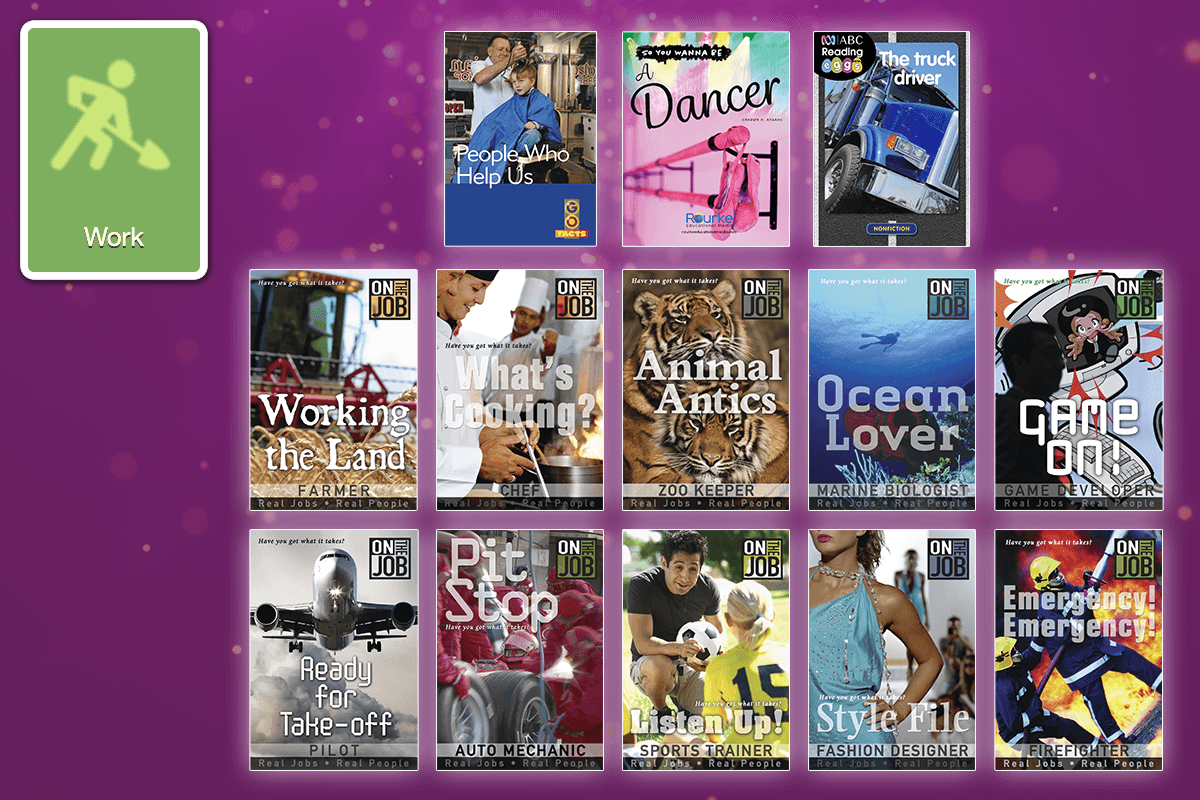
The books in the Work category introduce children to different occupations, industries and the skills needed for a range of jobs.
nonfiction-creative-arts-jump-link
7. Creative Arts
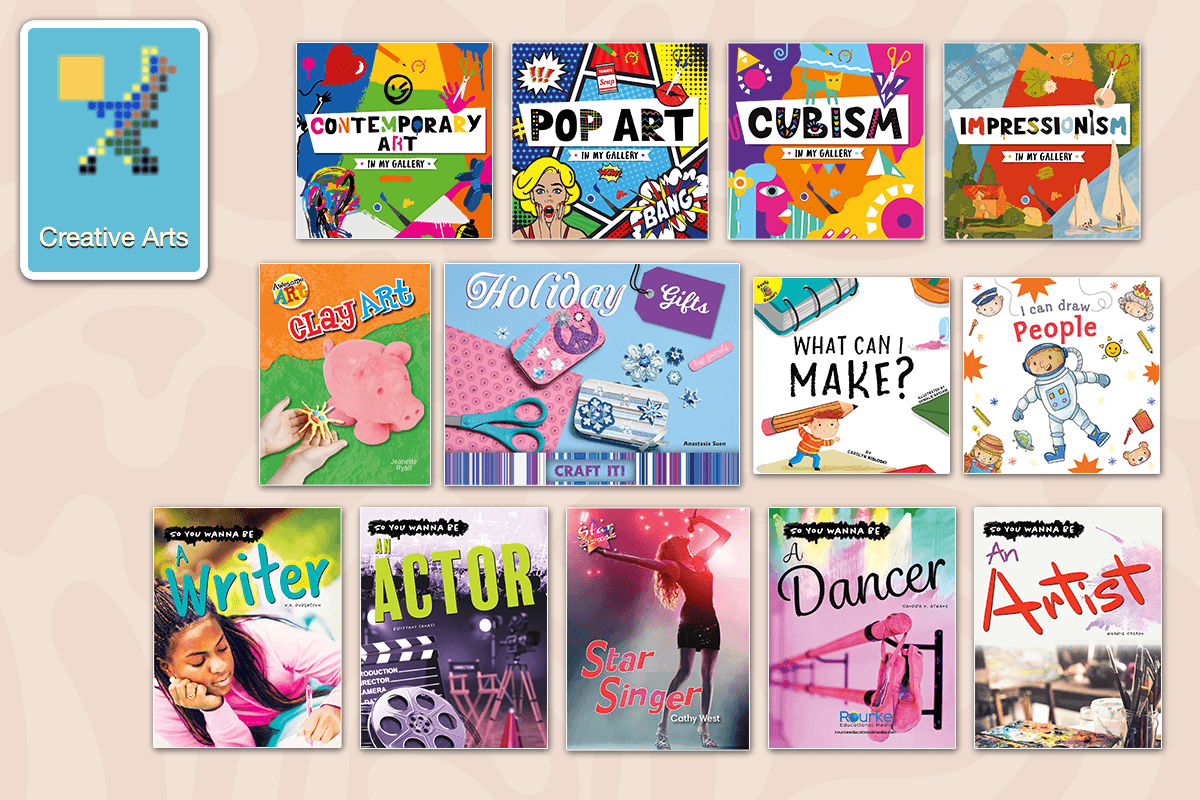
This category features books about different art forms and media, like painting, drawing, craft, music, drama, dance and filmmaking. Children can also learn about groundbreaking art movements, such as Surrealism, Impressionism, Cubism and Pop Art.
Explore the Creative Arts category
Learn-to-draw books for kids
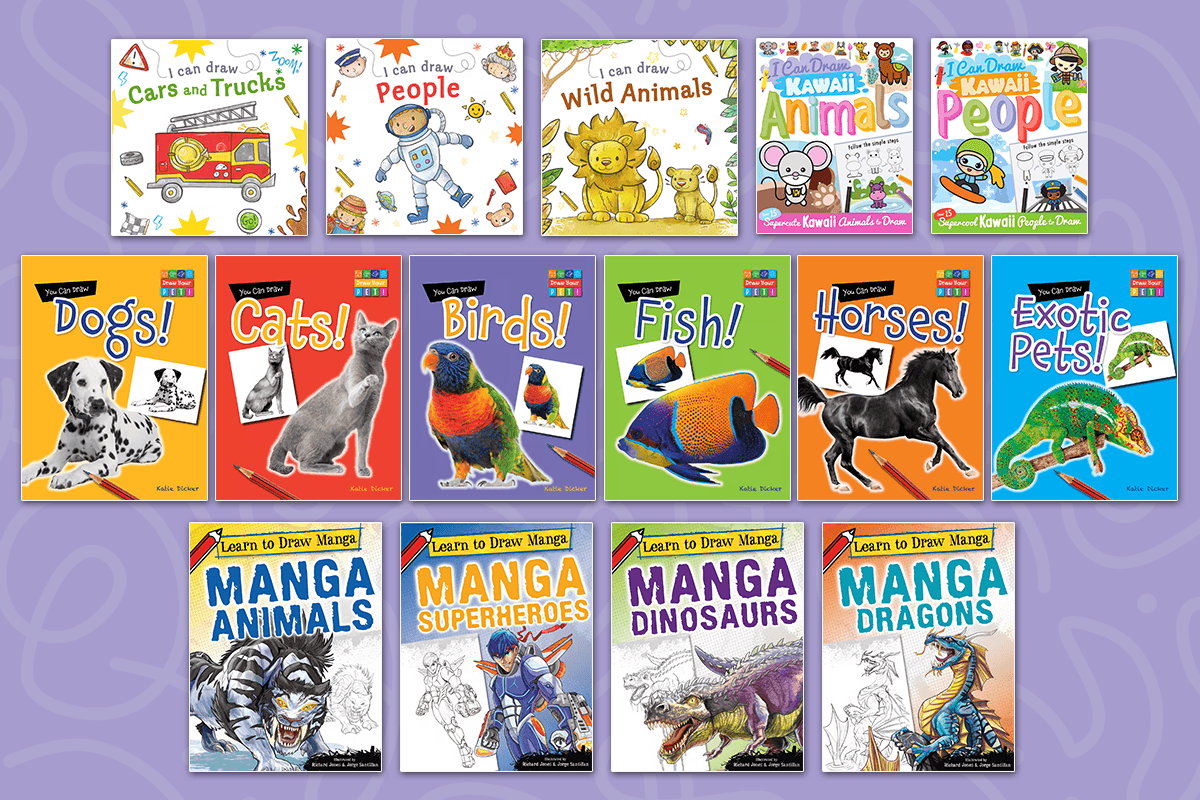
The Reading Eggs Library includes Learn to Draw books with step-by-step instructions and hands-on exercises to nurture your child's creative skills. Free trial
nonfiction-physical-science-jump-link
8. Physical Science
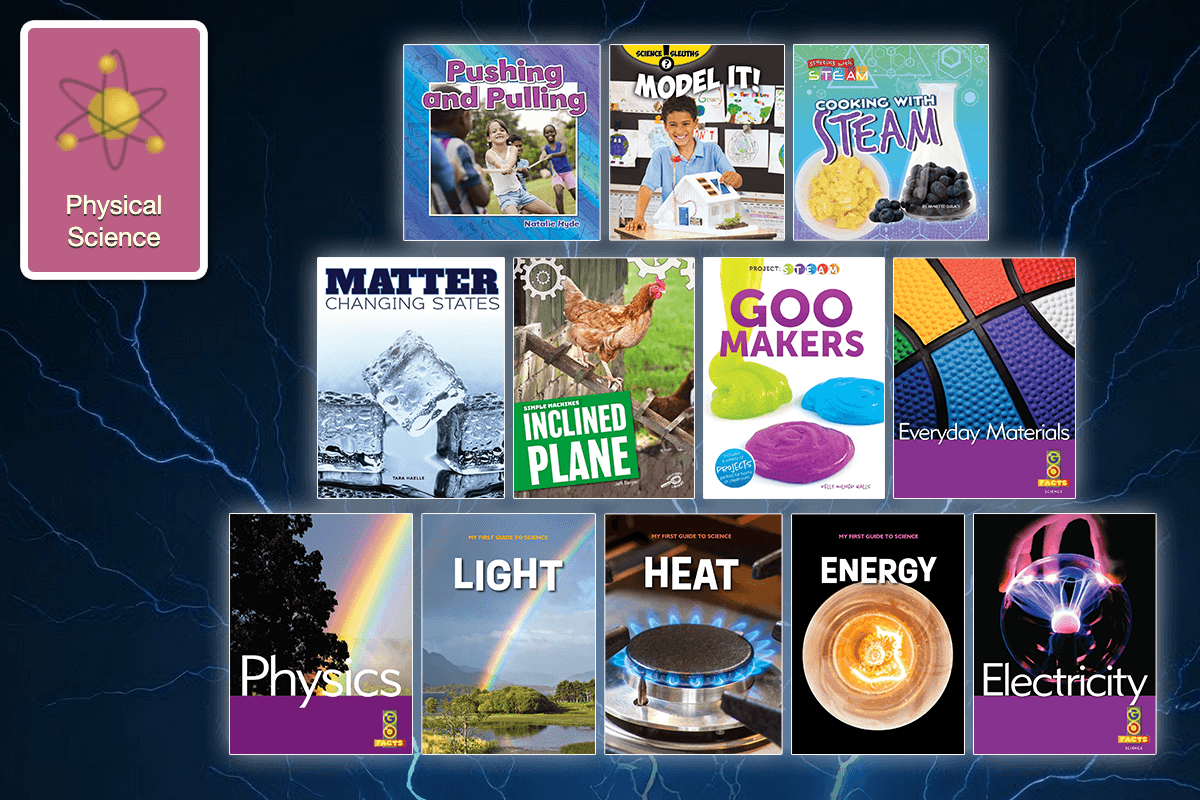
This category covers fundamental concepts in physics and chemistry, such as matter, materials, energy, forces, motion, light and sound.
Explore the Physical Science category
9. History
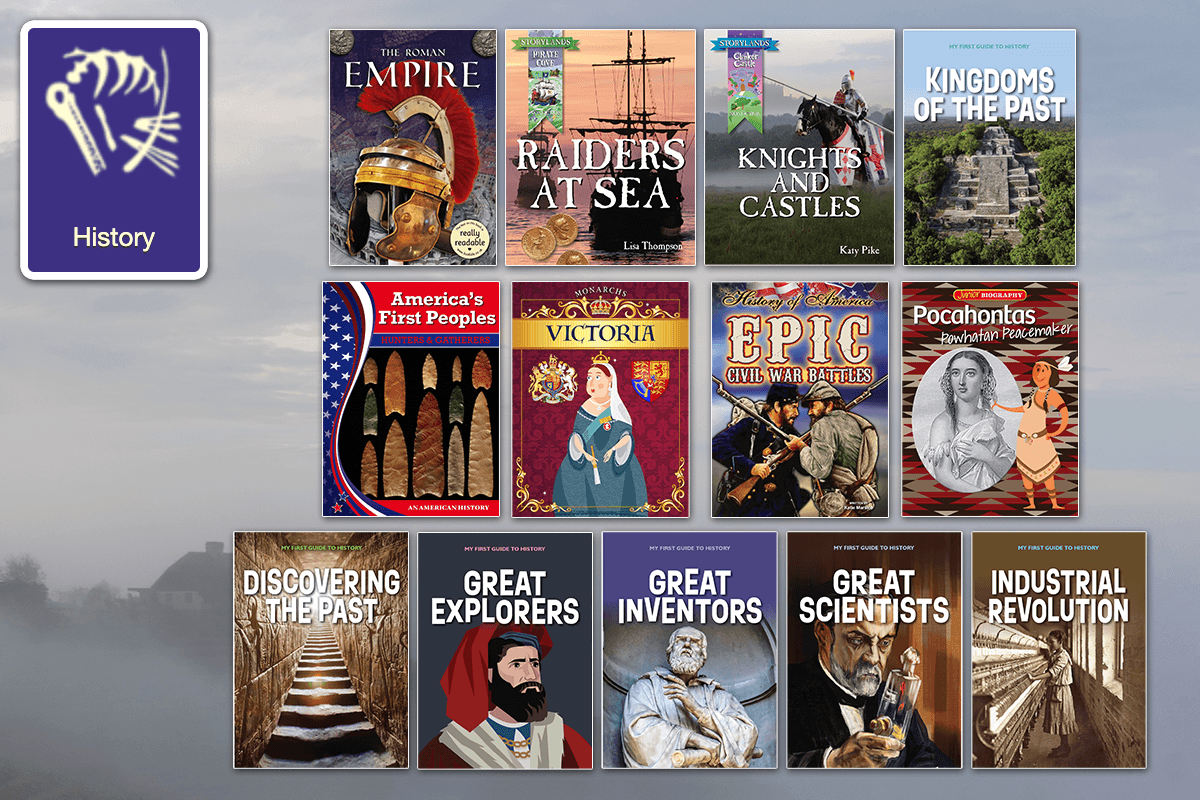
The books in the History category cover past events, civilisations, significant figures and how the world has changed over time. There is also a range of historical speeches (primary source materials) to inspire and educate.
Books about ancient civilisations
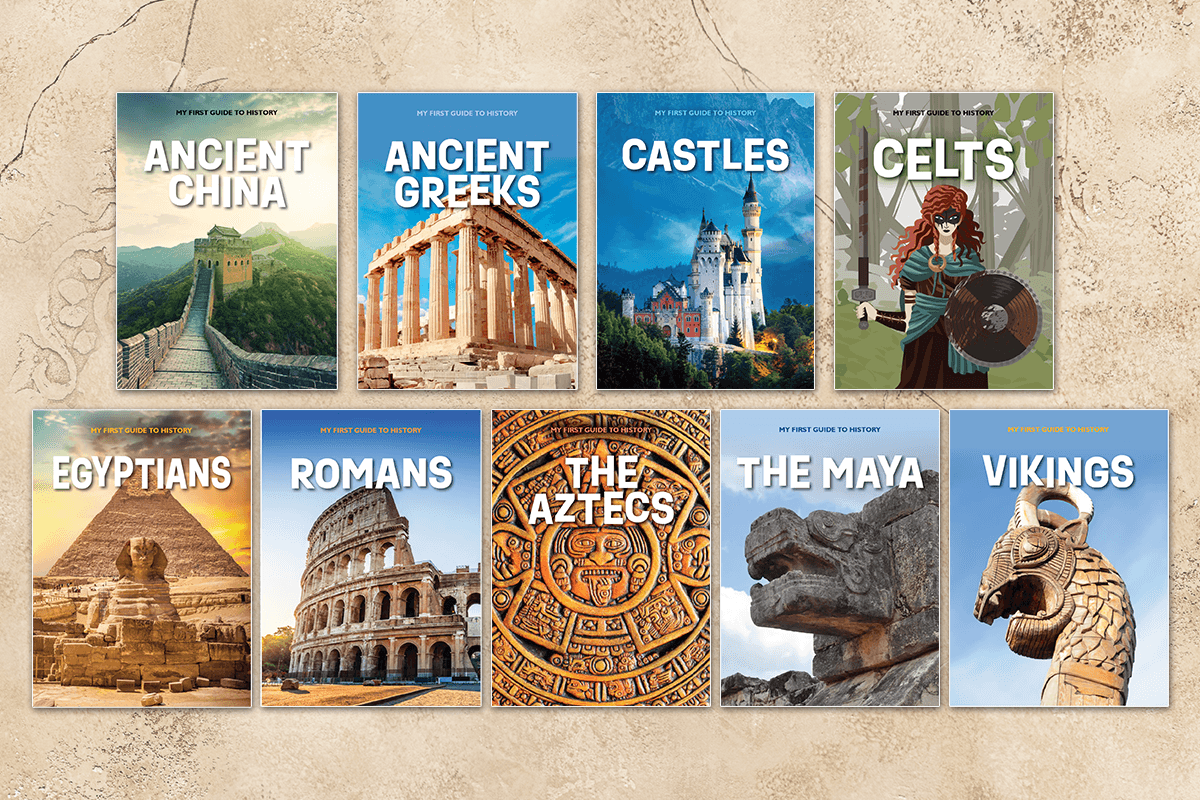
Children can step back in time and learn about the ancient civilisations that helped to shape our modern world. Titles include: Ancient China, Ancient Greeks, Egyptians, Romans, Vikings and The Aztecs. Free trial
Access thousands of children’s nonfiction books for FREE
The Reading Eggs Library is packed with over 4,000 fiction and nonfiction titles to nurture your child’s love for reading. Start your 30-day free trial today and unlock the entire Library, as well as hundreds of fun reading lessons, games and activities for ages 2–13.
nonfiction-preschoolers-jump-link
Nonfiction books for toddlers and preschoolers
In addition to the titles above, Reading Eggs Junior (ages 2–4) features a library of nonfiction books for toddlers and preschoolers, all with read-aloud audio.
Colourful photographic concept books help early learners build vocabulary and language skills and develop their concentration and comprehension.
The books are organised into sets based around high-interest areas:
Alphabet I Spy
Animals
Concepts
Countries
Feelings
Home
Machines
Numbers
Pets and Farm Animals
The Alphabet
The World Around Us
Spanish.
You can explore the nonfiction books for toddlers and preschoolers in Reading Eggs Junior for free with a 30-day trial of Reading Eggs.
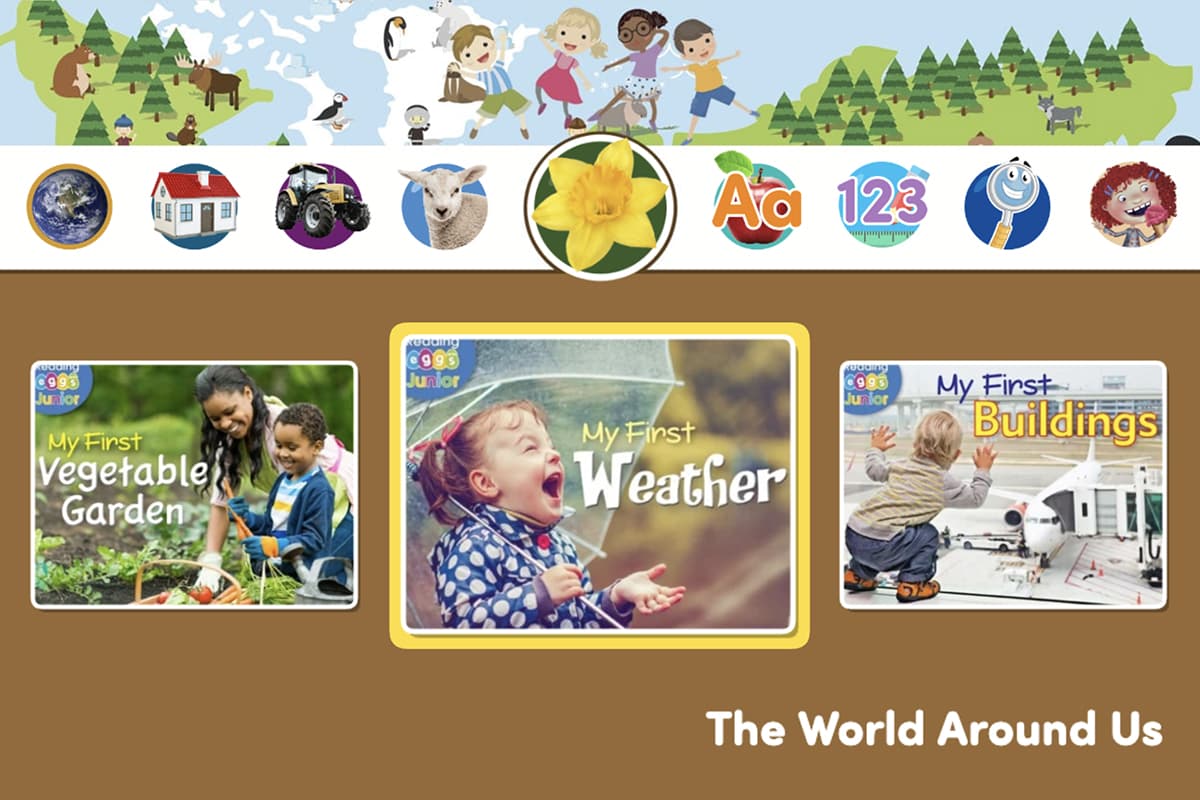
Tips for choosing nonfiction books for kids
Here are six tips to help you choose nonfiction books for your child:
1. Talk about nonfiction
Explain to your child that you will be reading a nonfiction book. This means that the book will give you information that is true. This simple introduction will help your child understand the difference between fiction and nonfiction.
2. Explore your child's interests
Your child probably has a special interest in something, whether it's cars, ballet, football, music, or animals. Find nonfiction books that suit your child's interests and read them together to help them gain more understanding from the text. Don't worry too much if the book looks too complex; nonfiction books don't have to be read from cover to cover.
3. Make connections with what's happening in your child's life
Are you planning a trip? Collect reading material about the place you are visiting, including websites, maps and travel guides. Is there an art festival happening in your local area? Gather books about painting, artists and different ways people create art.
4. Match their favourite fictional stories with nonfiction books
Think about the books or films that your child already enjoys and choose nonfiction books that match. If they have enjoyed a movie which features dinosaur characters, find books about fossils, archaeology and extinct species to tap into their newfound interest.
5. Choose books with captions, diagrams, photos, maps and illustrations
Books with different features and parts are a great way to introduce your child to analytical reading. Help them refer to diagrams, charts and illustrations after reading relevant sections of text. Don't forget to also help them navigate the table of contents, index section and glossary.
6. Go on a day trip
Visit a new place together, such as a community garden, dog park or sporting field, as a way of introducing your child to a new topic. Choose nonfiction books that relate to each trip. If your child has any immediate questions, avoid answering them directly and let them know that you will read a book together later to find out the answer. This will help your child develop a habit of researching questions from informative and factual texts.
Access thousands of children’s nonfiction books for FREE
The Reading Eggs Library is packed with over 4,000 fiction and nonfiction titles to nurture your child’s love for reading. Start your 30-day free trial today and unlock the entire Library, as well as hundreds of fun reading lessons, games and activities for ages 2–13.
What other parents say about Reading Eggs
“I am a homeschooling mother of two boys. I just wanted to thank you and all the Reading Eggs staff! Y'all have created an AMAZING tool to use in encouraging and strengthening my child's reading skills. My Bryson is 8 years old and really struggles with learning to read and enjoying reading at all. We have tried SEVERAL reading programs and curriculums, but nothing seemed to spark any interest. He is a very intelligent child, but bores easily. Reading Eggs has been able to hold his attention and get him excited about our school day. He actually went to bed last night saying he couldn't wait to do school tomorrow! I am so pleased with his response to this website! Thank you so much! You have helped this mama more than you will ever know!” – Kelly M
“I just wanted to thank you for such a great product. My daughter has just got her reading test results from school. She is at the reading age of 9. She's not even 8 yet. I strongly believe that it has to do with the fact that she started Reading Eggs.” – Jenni M.
“Reading Eggs was exactly what we needed to help "flip the switch" for my 5-year-old kindergartener when it came to reading. In just a few short months she's reading anything and everything she sees.” – Kashmir Campbell
“Reading Eggs is simply amazing […] My kids simply loved it. Within two months my son is reading fluently (just started Year 2), and the younger one, who is in Kindergarten, is reading three- to four-letter words already.” – Umm Bilal
“My child LOVES Reading Eggs! This program has been exactly what I've been looking for. We tried two other popular reading programs and while they were fun, just didn't translate to my child becoming a reader. He's a reluctant reader, capable but frustrates easily. With Reading Eggs I have never witnessed an ounce of frustration, just watched my son having fun. And even better – I've watched him start to read in such a natural progression that is a beautiful thing to watch. Thank you, Reading Eggs!” – C. Bryant
“I really want to thank Reading Eggs for such a fantastic program. My son, then 4, started Reading Eggs 12 months ago. Comparing to when he began, he could just recognise the alphabet and very simple words. Now he has just turned 5 and reads books very confidently! He really enjoyed the simple-to-use interface and was always keen to spend time doing Reading Eggs. He logged into Reading Eggs most days and after one year, had completed most of the lessons. Whether we sat with him and supervised or whether independently, we were amazed at how powerful the learning tools were. Reading Eggs very thoroughly took him through all the facets of the English language and gave him the confidence to become a really good reader. We wanted to drop you this note to express our appreciation for this program and to encourage other parents to take up this same opportunity. ” – Alistair
“We LOVE Reading Eggs! My son is 5 and had previously demonstrated only a little bit of interest in learning to read. He would get easily frustrated when we tried to read simple early reader books. Well, we gave Reading Eggs a try, and it has been a HUGE hit! He loves the games, he loves earning more eggs, he loves advancing to a new level – it's been great! It provides just the right amount of challenge for him; he is learning SO much and yet the frustration level is very low, which is perfect for my budding perfectionist. His father and I are quite honestly shocked and amazed at how FAST he is learning to read, and he is surprising us all the time recognising real words out and about in the real world. In summary, we just LOVE the program, and I would recommend it highly to all my friends.” – Chessa
Access thousands of children’s nonfiction books for FREE
The Reading Eggs Library is packed with over 4,000 fiction and nonfiction titles to nurture your child’s love for reading. Start your 30-day free trial today and unlock the entire Library, as well as hundreds of fun reading lessons, games and activities for ages 2–13.






